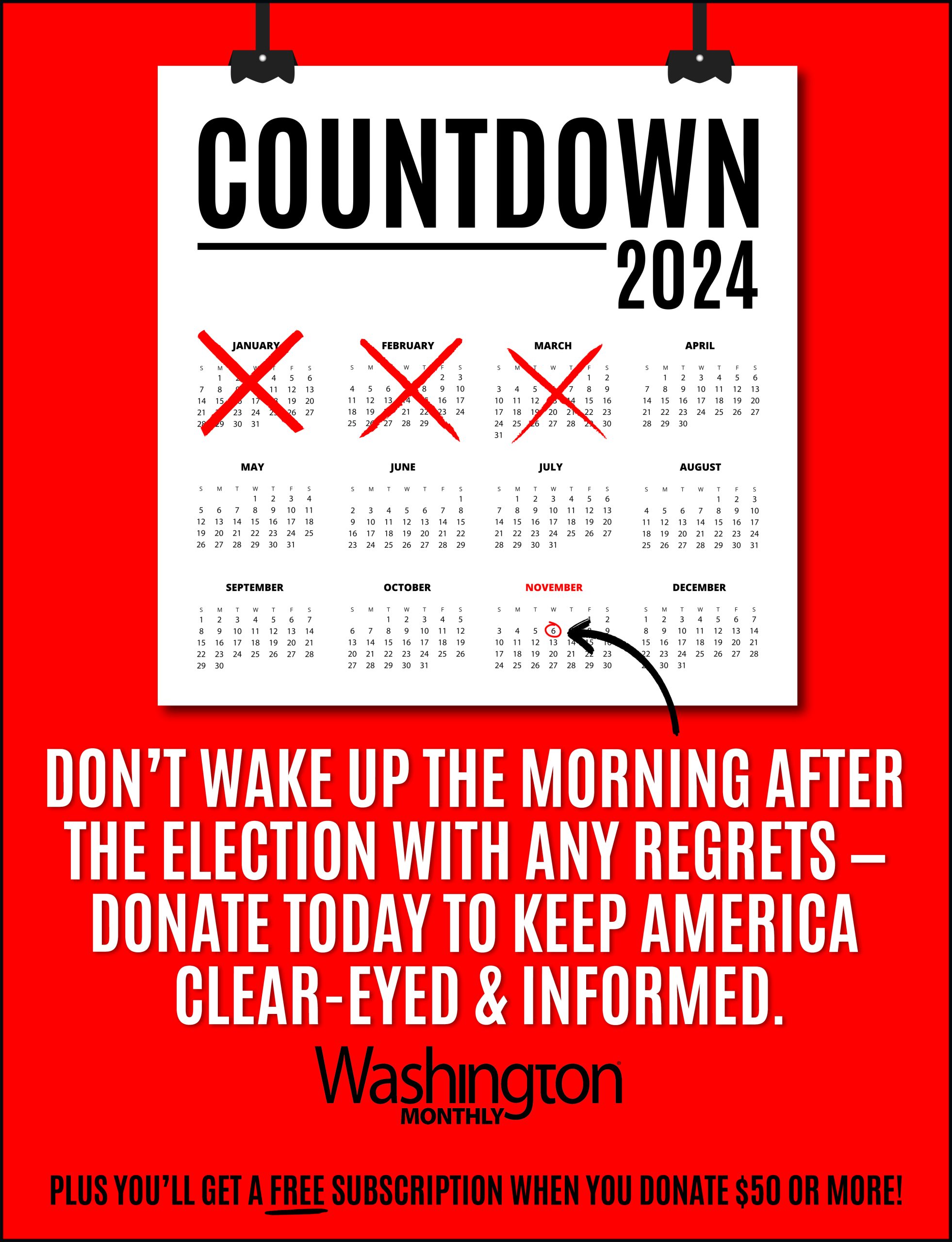Yesterday I criticized Charlie Cook for telling Chuck Todd that Democrats need to reach out to “real America.” Today I want to give him credit for the fact that the article that prompted that discussion uses the word “heartland” to refer to the geographic location of the Americans he was referring to.
Beyond the linguistics, however, it might be instructive to take a look at what Cook is actually saying. I don’t necessarily disagree with this:
Simply put, Democrats need to expand their sensitivity-training courses to include people who live in small-town and rural America—middle-class white voters, people who live paycheck to paycheck, and whites who attend church at least once a week. Franklin Roosevelt’s New Deal coalition of voters is now officially dead. Democrats were losing these voters before Donald Trump came along and will continue to do so beyond his presidency unless they show genuine concern for these constituencies. To be sure, the country is changing and becoming more diverse, but it is not doing so at the same pace everywhere. Democrats are running up the score in places that do not help them win majorities in the House, Senate, and Electoral College.
That recommendation is not unique to Cook, and it is something we’re hearing from both Keith Ellison and Tom Perez in their campaigns to head up the DNC.
But as he did with Chuck Todd, Cook focuses on the religious divide – while most others have zeroed in on the need for more of an emphasis on economic populism.
If any Republican candidate in modern history should have done badly with white churchgoers, it was Donald Trump. And yet, exit polls show that Trump carried the 26 percent of the white electorate who consider themselves evangelical or born-again voters by a 65-point margin, 81 to 16 percent. Among the 33 percent of voters of all races who attend church at least once a week, Trump won by 16 points, 56 to 40 percent, and among those who go at least monthly, Trump won by 12 points, 54 to 42 percent. Democrats can take solace in winning people who say they never go to church by 31 points, 62 to 31 percent, but they will be distressed to learn that this group makes up just 22 percent of the electorate.
Cook is very well-versed in the numbers and it’s true, Trump overwhelmingly won among white evangelical born-again Christians. But based on my own research and experience, that was due to two things:
- The way that evangelical churches have been infused with a message of Islamophobia, and
- An emphasis on overturning Roe v Wade via a Supreme Court nomination
A few of the white evangelical Christians I know refused to vote for Trump. But those who supported him prioritized a war with Islam and women’s access to abortion as the real issues that matter. They were willing to overlook every other way Trump was unfit for office because of his tough talk about Muslims and/or his promise to nominate conservatives to any opening on the Supreme Court. It is also important to note that they were led in these efforts by the sons of two of the most important figures in modern day evangelicalism…Franklin Graham and Jerry Falwell, Jr.
Cook goes on to recommend that, in order to reach out to white Christians, Democrats should embrace the ideas of Jim Wallis.
Democrats worried about their poor showing among churchgoers would be well-advised to read God’s Politics: Why the Right Gets It Wrong and the Left Doesn’t Get It by Sojourners president Jim Wallis, whom I would describe as a liberal evangelical. Wallis argues that conservatives have no corner on religion in general or Christianity in particular, but that Democrats are increasingly becoming a secular party while Republicans are becoming the party of people of faith.
I am very familiar with Wallis as he is one of the people who challenged me to re-think the fundamentalism in which I was raised way back in the mid 1970’s. Doing so required me to reject almost every way that I had come to understand Christianity – both in terms of theology and politics. That’s a pretty tall order to assume. But people like Wallis and Rev. William Barber (leader of the Moral Mondays Movement) continue to try.
Beyond that, to suggest that Democrats are becoming “a secular party” is to miss that almost every time Hillary Clinton spoke during the campaign, she talked about how her Methodist roots had informed her call to public service – or the fact that her running mate was a devout Catholic who frequently talked about his faith as well as his service as a Jesuit missionary. Many of the people who weren’t convinced by that still deny Barack Obama’s Christian faith and continue to spread the lie that he is Muslim.
What Cook fails to realize is that, when describing Christians and/or church-goers, great divides exist that mirror the political divides we talk so much about these days. I agree with him that it is incomprehensible that so many who embrace a faith tradition decided to vote for Donald Trump. But for too many of them, making an effective appeal goes beyond simply talking about our faith, it means finding a way to breach the divide that permeates both religion and politics.
I can’t leave a discussion about religion and politics without noting that – outside of a discussion about Christians – we are watching our Muslim brothers and sisters be harassed and terrified of the incoming administration while right wing media incorrectly blames a Jewish family for the cancellation of a Christmas play. So in addition to having this kind of discussion about Democrats, don’t we need to call out the Republicans who are engaging in religious intolerance?




